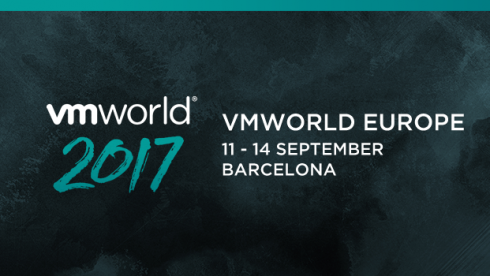DISCLAIMER: this article is older than one year and may not be up to date with recent events or newly available information.
What are your New Year’s resolutions? With 2020 coming up, people promise they will stop smoking, be more active, finally start with that hobby. In business, more and more people are looking at – or using – the cloud. They are now seeing real benefits of the cloud. However, there is no single trajectory. So, can hybrid cloud keep all the cloud’s promises?
Guestblog by Sylvain Cazard, VP SDDC EMEA, VMware
There are as many cloud strategies as there are companies
Almost all European clients I meet use the cloud, but they have very different approaches to it. Some companies were quick and eager to retire their data centres and rely purely on the public cloud. However, the vast majority of companies have opted for a hybrid cloud solution for a number of reasons. The simplest, without a doubt, is that migration to the public cloud is an ambitious and often long-term task. There are no hard and fast rules when it comes to migrating your apps to the cloud. Gartner defines five strategies, the “5 Rs”: Rehost (or lift and shift), Refactor, Revise (or Replatform), Rebuild, Replace (or Repurchase). Moreover, some apps will never be suitable for migration to the cloud, whether for economic, strategic or regulatory reasons.
The hybrid cloud is here to stay
Public cloud providers have reflected this in their offerings. Our challenge: a complex environment comprising traditional IT infrastructures, private clouds and public clouds. We can rightly question the likelihood of the cloud keeping its promises when we have to manage environments with a mix of equipment and administrative tools. The magic of the cloud is that it masks the complexity of IT infrastructures, which must continue even in a hybrid-cloud context. As cloud developers, it’s up to us to provide consistency so that customers can can move apps around easily. This is what VMware has always strived for, through technological developments, acquisitions and partnerships with like-minded businesses who share our vision of making cloud usage as simple as possible.
The cloud must consider the nature of modern apps
Monolithic applications and three-tier architectures are starting to disappear. Modern applications are structured in microservices that communicate between themselves and require greater flexibility in terms of IT infrastructures and, above all, in terms of networking. They need to be able to automatically provide all of the infrastructure that the application will need during its lifecycle. Many application components are now being built in containers, whether on premises or in the cloud. It’s equally as important to support virtual machines and containers when modernising infrastructures to create environments for hybrid clouds. Given that the IT world implement Kubernetes widely to manage container environments, VMware has taken the lead in integrating support for containers and Kubernetes into its Software-Defined Data Center (SDDC) and hybrid cloud solutions.
VMware Cloud Foundation: the cornerstone of the hybrid cloud
It’s impossible for each company and cloud provider to implement exactly the same equipment. Do we need to manage each environment independently, recreating silos like the ones that used to handicap data centres? Thankfully not. We need a generalised approach — software designed for all infrastructure components (server, storage and network) that we can extend to all private and public clouds, as well as a common cloud management platform (CMP). This is what VMware offers by bringing these functions together in VMware Cloud Foundation. Over 4000 public cloud providers have signed partnership agreements with VMware to build their public cloud based on the same principles and products as VMware Cloud Foundation, which is used by customers to build their private clouds. This way, we can guarantee customers compatibility between the public cloud and their own private clouds.
Category: Business, News, SDDC
Tags: cloud, Hybrid Cloud, Public Cloud, VCF, VMware Cloud, VMware Cloud Foundation





No comments yet